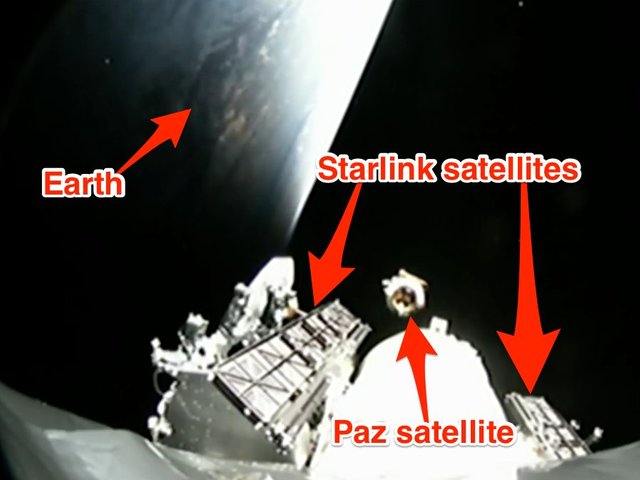SpaceX launches first two satellite of the StarLink - Internet Service Provider for whole world for cheap
on February 22, 2018, The two-stage Falcon 9 lifted off from California's Vandenberg Air Force Base at 9:17 a.m. EST and successfully delivered its main payload, the Paz radar-imaging satellite, into its intended orbit.
SpaceX, the rocket company founded by Elon Musk, piggybacked two experimental spacecraft onto a rocket that deployed a Spanish radar satellite into orbit.
Officially known as Microsat-2a and Microsat-2b, the spacecraft will test technologies that would enable the creation of a pervasive broadband network with connection speeds roughly 180 times the global average.
"Today's Falcon launch carries 2 SpaceX test satellites for global broadband," Musk tweeted on Wednesday (before a launch delay). "If successful, Starlink constellation will serve least served."
The scale of plans for the space-based network, known as Starlink, boggles the mind. In the coming years, SpaceX may launch 4,425 Starlink satellites into orbit some 700 to 800 miles above Earth, plus another 7,500 similar spacecraft into lower orbits.
That's nearly 12,000 satellites — more than twice the number of all satellites launched in history, according to a count by the Union of Concerned Scientists.
If the project is successful, people around the world would get internet that's about 40 times as fast as current satellite internet providers, even in very remote and rural areas.
SpaceX and Musk released the first-ever public images and video of the satellites shortly after their launch on Thursday.

The two experimental craft will help get SpaceX's Starlink satellite-internet constellation off the ground. If everything works out, this mega network, which company founder and CEO Elon Musk first announced in 2015, will eventually consist of thousands of satellites. Together, these spacecraft will provide low-cost internet to people around the world, with services beginning in 2020, on at least a limited basis, SpaceX has said.
"This system, if successful, would provide people with low to moderate population densities around the world with affordable high-speed internet access, including many who have never had internet access before," Praderio said.
The company has also successfully test-launched its Falcon Heavy system, an even larger reusable rocket that can send twice as much payload into low-Earth orbit as the next-largest launcher on the market — at perhaps one-fourth the cost.
So it's feasible that Falcon Heavy could deploy dozens of Starlink satellites in a single launch.
Musk hopes to get Starlink in an operational (though not complete) state sometime around 2024, according to Florida Today, and start selling access around that time.
Musk and SpaceX have not yet said what the monthly cost of the service might be. But Musk said in 2015 that user terminals should be laptop-size and cost between $100 and $300 each.
Hi, I found some acronyms/abbreviations in this post. This is how they expand: